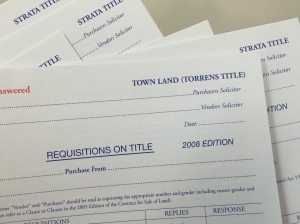A few years ago, Shire Legal acted for a client purchasing a property at Kurnell. There was nothing particularly unusual about the transaction – it was a standard family home being sold from one family to another.
However initial enquiries carried out by Shire Legal suggested that the recent renovation at the rear of the property was unapproved. The significant risk in purchasing a property with unapproved building works is that not only is the workmanship potentially dangerous (particularly if it was carried out by an unlicensed tradesman), but the property owner could be ordered by Council to demolish the building works if it doesn’t comply with Council regulations.
This would no longer have been an issue for the vendors if they were able to sell the property without any questions being raised by the purchasers, but luckily for the purchasers, we picked up on the unapproved works prior to contracts exchanging.
So how were the purchasers protected?
Shire Legal was able to request a special condition be inserted into the Contract to make the entire Contract subject to our clients being able to obtain a satisfactory Building Certificate from Sutherland Shire Council. We thought it was a pretty bold move, but one worth making.

So, what was the outcome?
Fortunately for our clients (and the vendors!), the certifier from Council inspected the property and issued a Building Certificate. Meaning that no rectification work was required, and the previously unapproved works were now approved.
But what if they weren’t approved?
Nevertheless, the special condition would have given our client a way to get out of the Contract if the Council was not prepared to grant the Building Certificate. The vendor then would have the responsibility of making the property comply in accordance with Council’s requirements, something that our clients would not have wanted to do at their own cost.
______________________________________________
Make sure that you conduct sufficient searches and enquiries in relation to any property that you are purchasing – in particular, don’t take the risk with unapproved building works.
Contact Shire Legal on 95263444 or info@shirelegal.com.au if you have any questions about purchasing property.



 Why was the legislation changed?
Why was the legislation changed? 



